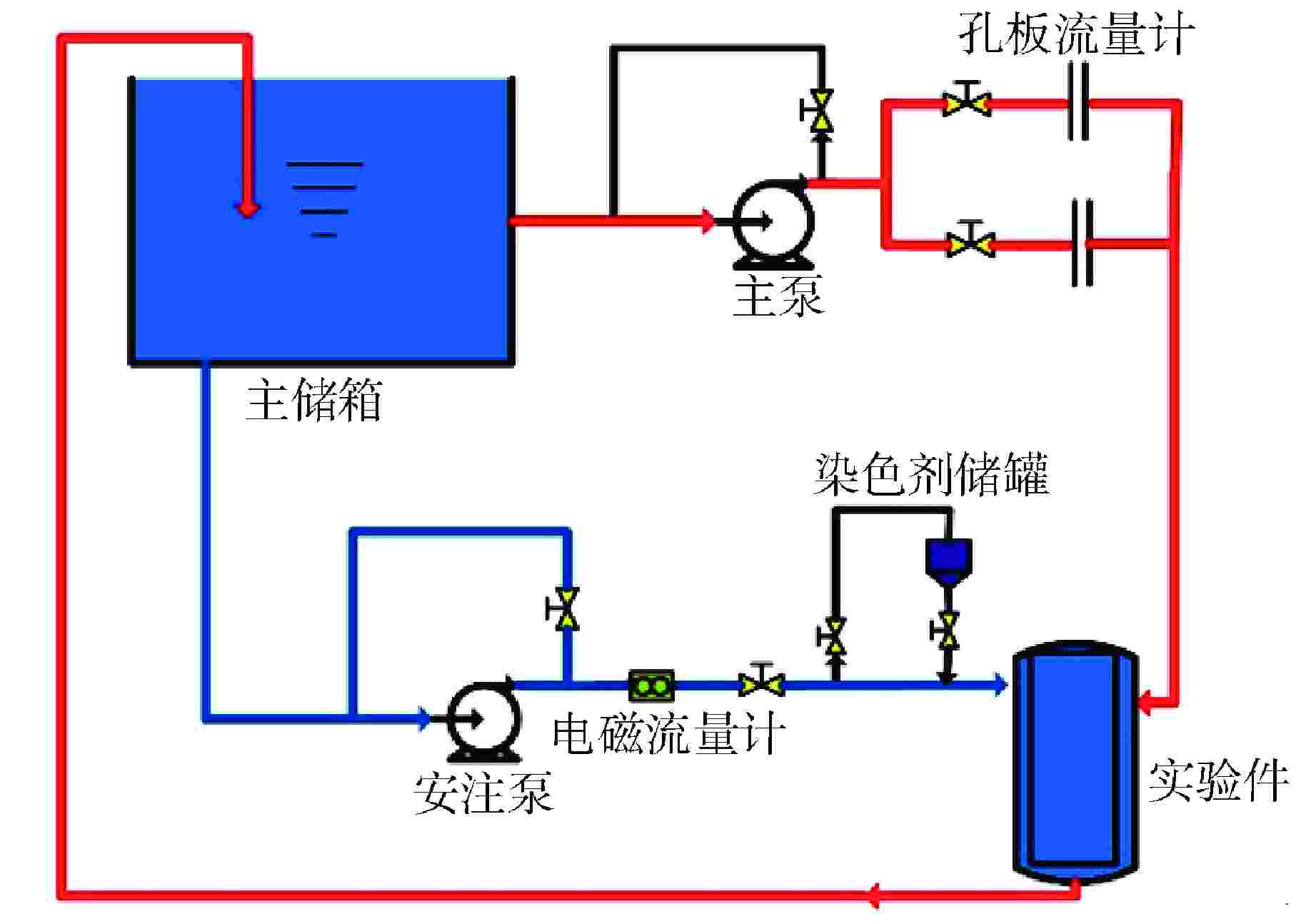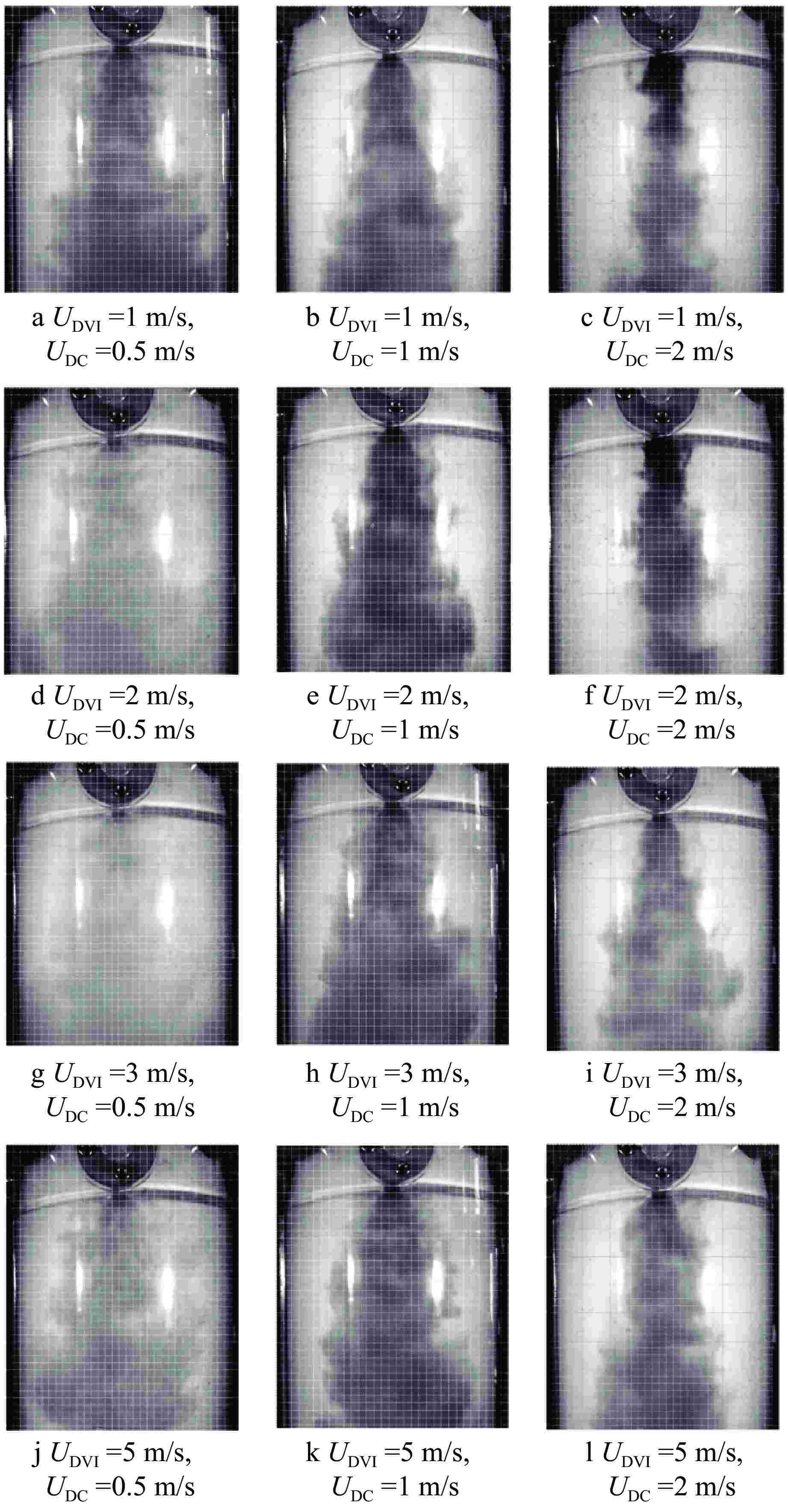Study on Heat Distribution Characteristics of Direct Safety Injection of Reactor Pressure Vessel
-
摘要: 我国非能动系列压水堆将应急冷却系统冷却水的注入管道直接连接于压力容器上,与传统的冷管段安注不同,这种安注方式被称之为反应堆压力容器直接安注。本文以安注条件下的反应堆压力容器为研究对象,采用物理实验与数值分析结合的方法,对安注流体在压力容器表面形成的热分布形态进行研究。研究发现,不同于传统的主管道冷段斜接管安注方式,直接安注条件下安注流体在下降环腔中的分布形态接近于等腰三角形。以实验结果为基础,结合数值计算验证,发现了压力容器热分布角与流速比成正比关系,并进一步提出了安注流体分布计算模型,从而为反应堆安全设计提供参考。Abstract: In the passive PWRs in China, the cooling water injection pipe for emergency cooling system is directly connected to the pressure vessel. Unlike the traditional safety injection (SI) of cold leg, this SI mode is called reactor direct SI. For the reactor pressure vessel under the SI conditions, this paper studies the heat distribution shape of the SI fluid on the surface of the pressure vessel by the combination of physical experiment and numerical analysis. As shown in the study, unlike the traditional oblique nozzle SI mode for cold leg of the main pipe, the distribution of SI fluid in the downcomer annulus is approximately in the shape of an isosceles triangle under the direct SI condition. Based on the experimental results and the numerical calculation and verification, the heat distribution angle of the pressure vessel is found directly proportional to the flow rate ratio, and moreover, the calculation model of the SI fluid distribution is proposed for reference in the reactor safety design.
-
Key words:
- Reactor pressure vessel /
- Direct SI /
- Visual experiment /
- Numerical calculation /
- Heat distribution
-
[1] 贺寅彪,曲家棣,窦一康. 反应堆压力容器承压热冲击分析[J]. 压力容器,2004, 21(10): 5-9, 13. doi: 10.3969/j.issn.1001-4837.2004.10.002 [2] 郑斌,臧峰刚,孙英学. 反应堆压力容器承压热冲击分析研究[J]. 核动力工程,2012, 33(1): 1-3, 13. doi: 10.3969/j.issn.0258-0926.2012.01.001 [3] 张平. 反应堆压力容器的长寿命设计分析[C]//中国核科学技术进展报告(第三卷)-中国核学会2013年学术年会论文集第2册(铀矿冶分卷、核能动力分卷(上)). 哈尔滨: 中国核学会, 2013. [4] TOPPILA T. CFD simulation of fortum PTS experiment[J]. Nuclear Engineering and Design, 2008, 238(3): 514-521. doi: 10.1016/j.nucengdes.2007.01.022 [5] GONZÁLEZ-ALBUIXECH V F, QIAN G, SHARABI M, et al. Coupled RELAP5, 3D CFD and FEM analysis of postulated cracks in RPVs subjected to PTS loading[J]. Nuclear Engineering and Design, 2016(297): 111-122. doi: 10.1016/j.nucengdes.2015.11.032 [6] SCHULZ T L. Westinghouse AP1000 advanced passive plant[J]. Nuclear Engineering and Design, 2006, 236(14-16): 1547-1557. doi: 10.1016/j.nucengdes.2006.03.049 [7] ZHENG M G, YAN J Q, JUN S T, et al. The general design and technology innovations of CAP1400[J]. Engineering, 2016, 2(1): 97-102. doi: 10.1016/J.ENG.2016.01.018 [8] WENG Y, WANG H T, CAI B A, et al. Flow mixing and heat transfer in nuclear reactor vessel with direct vessel injection[J]. Applied Thermal Engineering, 2017(125): 617-632. doi: 10.1016/j.applthermaleng.2017.07.040 [9] MENTER F R. Two-equation eddy-viscosity turbulence models for engineering applications[J]. AIAA Journal, 1994, 32(8): 1598-1605. doi: 10.2514/3.12149 [10] CANNY J. A computational approach to edge detection[J]. IEEE Transactions on Pattern Analysis and Machine Intelligence, 1986, PAMI-8(6): 679-698. doi: 10.1109/TPAMI.1986.4767851 -






 下载:
下载:



